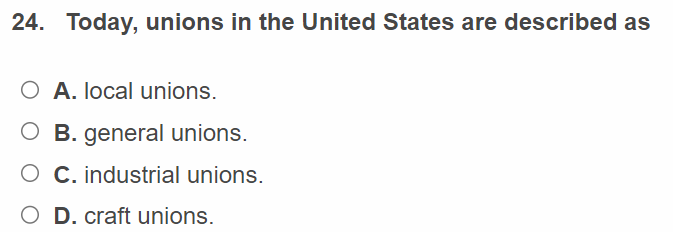In the kaleidoscopic landscape of American labor, unions have long stood as bastions of solidarity, echoing the collective resolve of workers seeking equitable treatment and a slice of the proverbial pie. Yet, as contemporary dynamics shift beneath the feet of both labor and management, one must ponder: how relevant are unions in America today? The discourse surrounding this question forms a tapestry woven with intriguing threads of historical significance, economic jurisprudence, and sociopolitical fabric.
The legacy of unions is a rich narrative that mirrors the evolution of labor rights in the United States. Formed in the crucible of the Industrial Revolution, these collective organizations were responses to inhumane working conditions, minimal wages, and the powerlessness of the individual worker against monolithic corporate interests. The Great Depression further catalyzed unionization efforts, leading to monumental legislative victories such as the National Labor Relations Act of 1935, which enshrined workers’ rights to organize and collectively bargain. Thus, unions emerged as the chrysalis of change, metamorphosing the landscape of labor relations.
Fast forward to the 21st century, and the sizes and structures of unions reflect a microcosm of broader societal changes. While union membership has seen a notable decline—from about 35% of the workforce in the 1950s to approximately 10% today—this numerical dip belies an intricate narrative of relevance. The present-day union landscape has transformed into a patchwork quilt, threading together diverse industries ranging from teachers and healthcare professionals to gig economy workers. Each strand signifies an ongoing struggle to adapt to the metamorphosing nature of work itself.
In the grueling arena of economic disparity, unions continue to serve as a counterweight to pervasive inequality. They negotiate not merely for wages but for a dignified existence, encompassing healthcare benefits, retirement security, and workplace safety—elements that are increasingly precarious in the gig economy. Interestingly, studies indicate that unionized workers earn significantly higher wages than their non-union counterparts, often with more comprehensive benefits. In this regard, unions operate not only as advocates but also as economic engines that contribute to the fundamental well-being of the communities they inhabit.
Like a well-tuned orchestra, the efficacy of a union resonates when members engage in collective action. Strikes, protests, and negotiations can dramatically reshape the contours of labor relations, as exemplified in recent high-profile cases such as teacher strikes across numerous states advocating for better funding and resources in public education. Such movements restate the relevance of unions as catalysts for mobilization, galvanizing workers to coalesce around common interests. However, as societal perceptions toward unions fluctuate, one’s understanding of their cultural currency emerges as a pivotal aspect of their relevance.
As the digital age unfurls its gossamer wings, the gig economy introduces complexities that challenge traditional union paradigms. Workers find themselves ensnared in a labyrinth of non-standard employment relationships characterized by precariousness and lack of benefits. In response, innovative unions such as the Freelancers Union have sprung up, reflecting the necessity to incorporate non-traditional workers into the labor conversation. This evolution speaks to the tenacity of unionization efforts, even as they venture into uncharted territories filled with ambiguity.
Moreover, the juxtaposition of corporate power against organized labor uncovers a dialectical relationship that merits further examination. While corporate lobbying often seeks to undermine the bargaining power of unions, a counter-narrative emerges through the support of progressive policies championed by various interest groups advocating for labor rights. The recent resurgence of activism has also permeated the corporate corridors of power, compelling companies to reconsider their stances toward labor dynamics. The inclusion of corporate social responsibility agendas indicates that business models are gradually intertwining with labor relations, necessitating unions’ presence at the negotiation table.
In evaluating the broader sociopolitical context, unions are not static entities but rather dynamic organisms responding to external stimuli. The societal discourse surrounding economic justice, racial equity, and gender parity has illuminated pathways for unions to engage with these pressing issues. Initiatives that address systemic inequalities illustrate how unions can transcend traditional labor negotiations, transforming into advocates for social justice. This broader mission not only enhances the relevance of unions but also reinvigorates public perception, framing them as pivotal players in the quest for holistic societal progress.
However, challenges remain. The narratives surrounding unions often clash with antiquated perceptions that perceive them as relics of a bygone era. Resistance from various factions within society, including a segment that views organized labor through a skeptical lens, casts a shadow over their relevance. Consequently, unions must embrace a multifaceted approach that prioritizes transparency, member engagement, and adaptability to maintain their vitality.
As we traverse the intricate landscape of labor relations, the question of unions’ relevance in contemporary America surges forth vividly, like an ever-present tide. Their historical roots, adaptive strategies in the face of adversity, and unwavering commitment to the labor force render them indispensable actors in the ongoing narrative of American work life. The essence of unionization lies not solely in the negotiation of wages and benefits but in the fundamental assertion of worker dignity and solidarity.
Thus, as society propels forward, the relevance of unions is poised to transcend challenges, affirming their role as architects of economic justice and champions of collective empowerment. The romantic notion of the union halls as sanctuaries of struggle and resilience stands firm—reminding us that the collective voice, when harmonized, can crescendo into a powerful force for change, steadfast against the winds of adversity.












